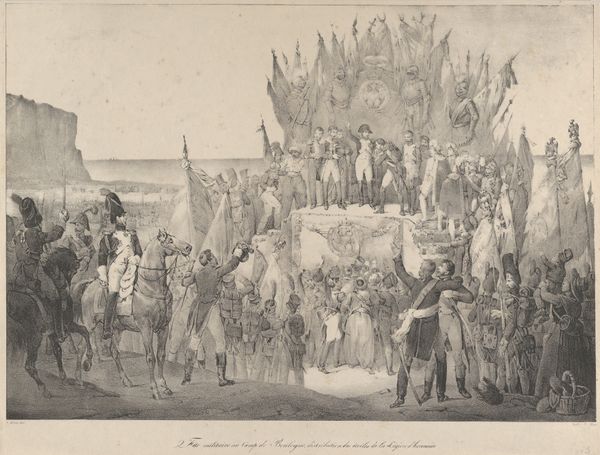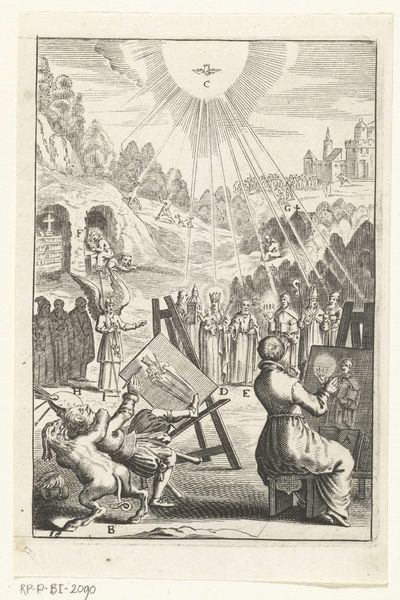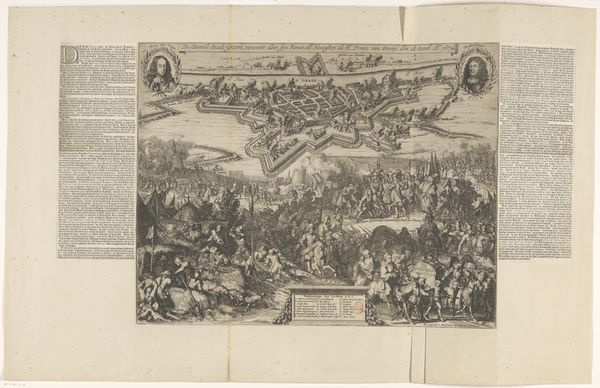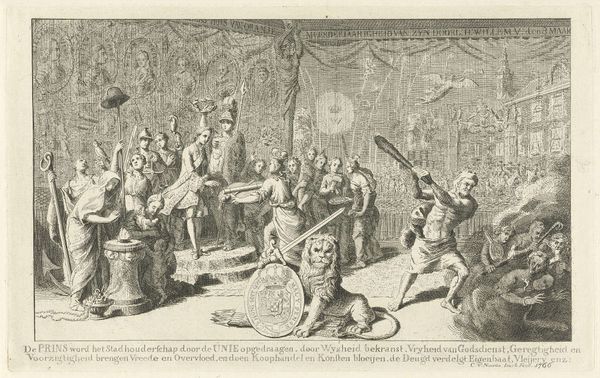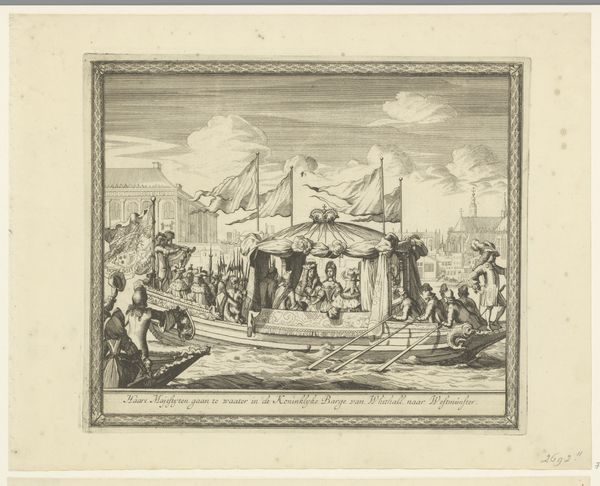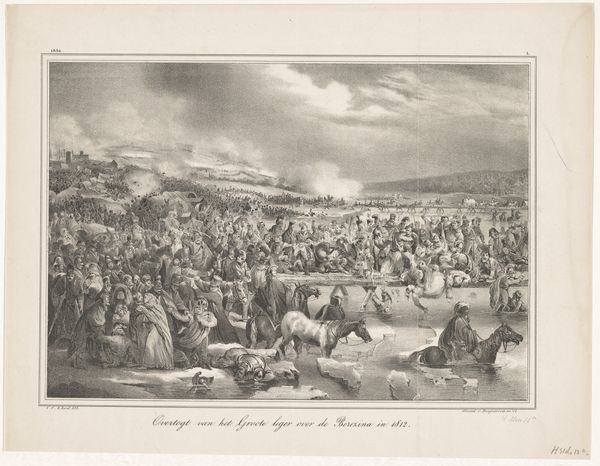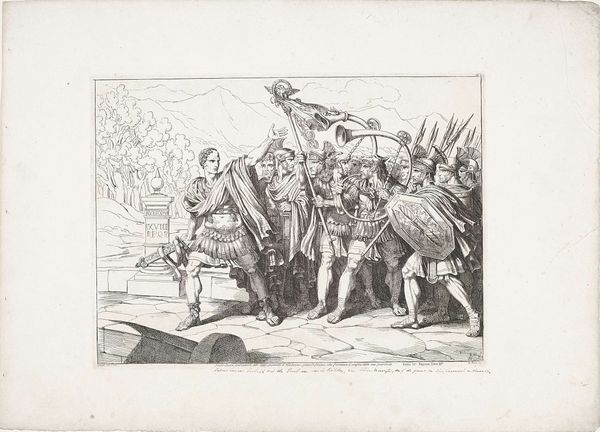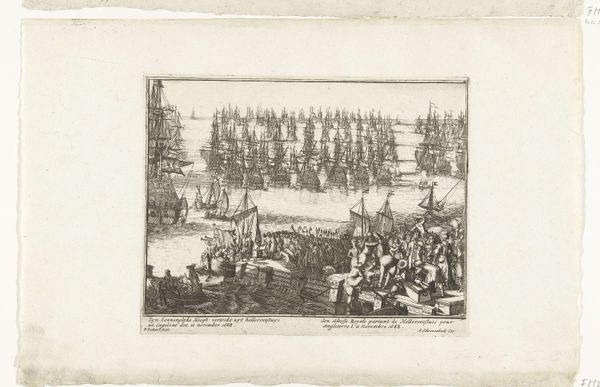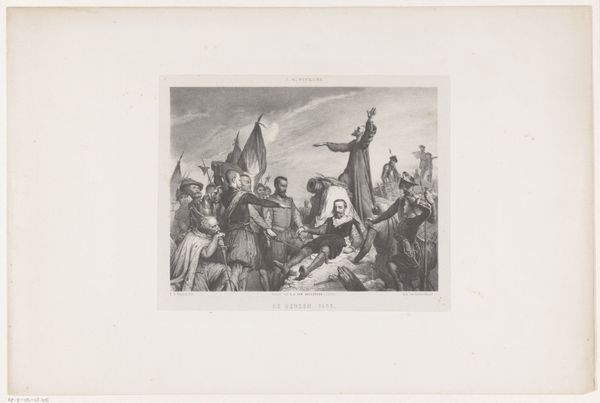
Aankomst van Prinses Elisabeth Christine van Wolfenbüttel in Mutaro, 1708 1707 - 1720
0:00
0:00
print, watercolor, engraving
#
narrative-art
#
baroque
# print
#
watercolor
#
watercolour illustration
#
history-painting
#
engraving
Dimensions: height 160 mm, width 187 mm
Copyright: Rijks Museum: Open Domain
Curator: Let's turn our attention to "Arrival of Princess Elisabeth Christine of Wolfenbüttel in Mutaro, 1708", created between 1707 and 1720 by Pieter Schenk. This work is an engraving with watercolor, held here at the Rijksmuseum. Editor: Immediately, I'm struck by the highly structured composition. It feels theatrical, almost as if a stage is being set, yet constrained within this border. Curator: Precisely! The composition reflects the rigid social structure and importance of ceremony in that era. It depicts a key historical event: the arrival of a princess for a royal marriage, laden with dynastic significance. The harbor, filled with ships, becomes a stage. Notice all the spears; that repetition symbolizes strength but could also point to possible conflicts. Editor: The perspectival depth achieved in such a small frame is quite skillful. However, the figures appear somewhat flattened. Perhaps intentionally so, as they seem more symbolic than realistically rendered individuals. The watercolor gives a muted yet celebratory mood. Curator: Yes, Pieter Schenk uses symbolic representation quite deliberately. The Princess is a conduit. Her arrival speaks to an affirmation of alliance and continuation. The engraver chose very particular symbols and images, some quite established, for immediate recognition, underscoring a specific cultural narrative. Editor: Considering the work's relatively small scale, the level of detail is noteworthy, especially the precision in the ships and architectural rendering. And those striking plumes of smoke adding visual drama and signaling…what, precisely? Royal fanfare, naval prowess, or something else? Curator: It's layered. The smoke might also indicate power or the anticipation of potential future military engagements as much as pomp. Water always brings a subtext of voyage and future journey, and smoke speaks to change. It certainly invites reflection on power dynamics of that period. Editor: Thinking about the artwork purely from a formal point of view allows us to engage with line, form, color—abstracted from the overt subject matter of political arrival, power projection—and that's also a doorway into understanding. Curator: For me, understanding its place within historical contexts—how it would have functioned, and how its imagery spoke to viewers in 1708—adds another profound dimension. Seeing beyond the visual presentation toward deeper layers of collective historical experience allows for a connection with something beyond us.
Comments
No comments
Be the first to comment and join the conversation on the ultimate creative platform.

